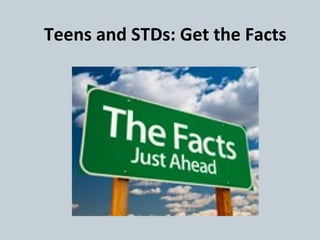
An std powerpoint
- 1. Teens and STDs: Get the Facts
- 3. FACTS
- 7. TEXAS HIV in Texas Nearly 70,000 people in Texas are known to have HIV. It is estimated that an additional 17,000HIV in Texas are living with people in Texas HIV, but are currently unaware of their status. The number of Texas are Nearly 70,000 people in people known to have HIV increased by 34% from 2005 to It is estimated that known to have HIV. 2011. Learn more about HIV in Texas (PDF : 199 kb). Posted 1/10/2013 an additional 17,000 people in Texas are living with HIV, but are currently unaware of their status. The number of people known to have HIV increased by 34% from 2005 to 2011.
- 8. Newly Diagnosed HIV Cases, Deaths, and People Living with HIV: Texas, 1980-2011 8,000 80,000 7,000 70,000 Living with HIV New HIV Cases / Deaths 6,000 60,000 People Living with HIV 5,000 50,000 4,000 40,000 New HIV Cases 3,000 30,000 2,000 20,000 Deaths among HIV Cases 1,000 10,000 0 0 80 81 82 83 84 85 86 87 88 89 90 91 92 93 94 95 96 97 98 99 00 01 02 03 04 05 06 07 08 09 10 11 Year
- 10. Myth: Only "trashy" people get STDs. • Fact: STDs does NOT discriminate. • Rich people get STDs. Poor people get them. Athletes get them. Math geeks get them. CEOs and professors get them. Even someone having sex for the first time can get an STD. The only people who have no risk of getting an STD are people who haven't had sex or any kind of sexual contact.
- 11. Myth: If your partner has an STD, you'll see it.
- 12. • Fact: There's often no sign that a person has an STD. • Even doctors often can't tell by looking if people have STDs. So they need to do tests, like bloodwork. People with STDs might not know they have them: STDs don't always cause symptoms. But it is possible to carry and spread the virus without ever having an outbreak. Untreated STDs can add up to serious health problems, like infertility (the inability to have a baby) or pelvic inflammatory disease (PID), which may land you in the hospital.
- 13. The ONLY Safe Sex is NO SEX • So much wrong information about sexually transmitted diseases (STDs) gets passed around that it's no surprise the diseases do too. Of course, the only way to be 100% sure you won't get an STD like herpes, chlamydia, or HIV, is not to have any type of sex (abstinence). But if you do decide to have sex, you'll need to stay informed and learn what's true — and what's not.
- 14. Fact: You can get some STDs more than just once. •Some STDs are yours for life, • like herpes and HIV. •Others, like chlamydia and gonorrhea, can be treated, but you may get infected again if you have sexual contact with someone who has them.
- 15. Chlamydia Most people who have chlamydia don’t know it since the disease often has no symptoms. •Chlamydia is the most commonly reported STD in the United States. •Sexually active females 25 years old and younger need testing every year. •Easy to cure, chlamydia can impact a woman’s ability to have children if left untreated.
- 16. Gonorrhea Anyone who is sexually active can get gonorrhea. •If they occur, symptoms in men and women vary depending on what part of the body is infected: Gonorrhea can affect the anus, eyes, mouth, genitals, or throat. •This disease can impact a woman’s ability to have children if left untreated.
- 17. Genital Herpes • Genital herpes is a common STD, and most people with genital herpes infection do not know they have it. • You can get genital herpes even if your partner shows no signs of the infection. • If you have any symptoms (like a sore on your genitals, especially one that periodically recurs) laboratory tests can help determine if you have genital herpes. • There is no cure for herpes, but treatment is available to reduce symptoms and decrease the risk of transmission to a partner.
- 18. Syphilis Syphilis is a sexually transmitted disease (STD) caused by a bacterium. Syphilis can cause long-term complications and/or death if not adequately treated. • Syphilis is easy to cure in its early stages. • Signs and symptoms of syphilis include a firm, round, small, and painless sore on the genitals, anus, or mouth, or a rash on the body, especially on the palms of the hands or the soles of the feet. • During 2004–2008, rates of P&S syphilis increased the most among 15–24 year-old men and women.
- 19. Pubic lice are tiny insects hat infect the pubic hair area and lay eggs. These lice can also be found in armpit hair and eyebrows. Symptoms: Pubic lice causes itching in the area covered by pubic hair. Itching often gets worse ...